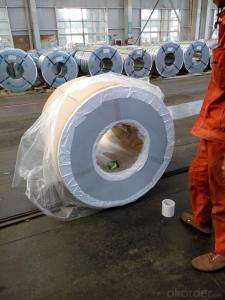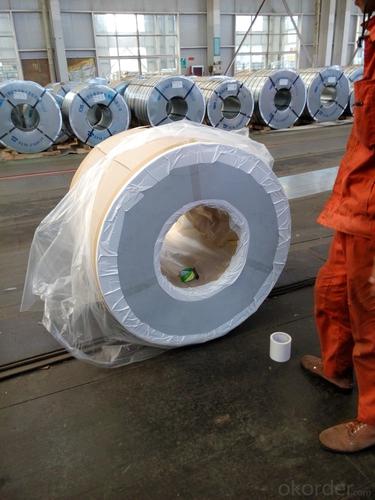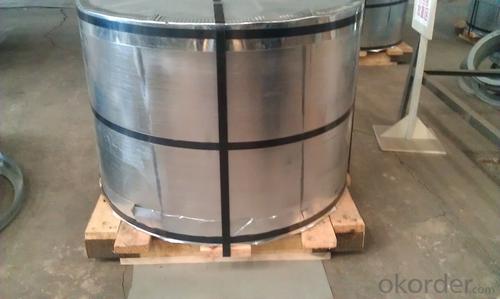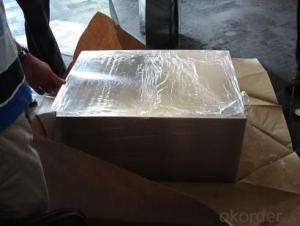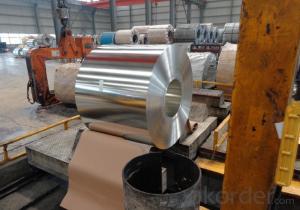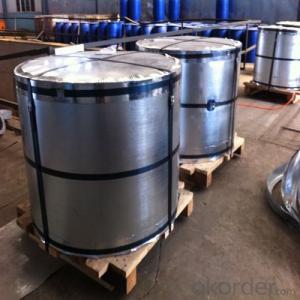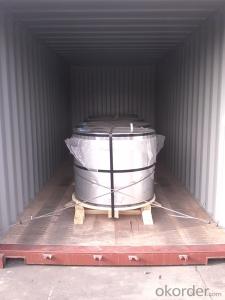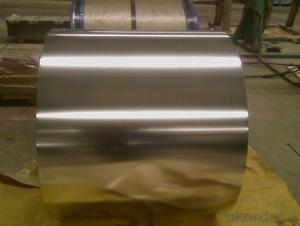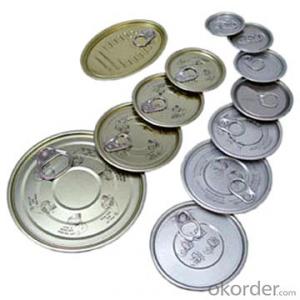Electrolytic Tinplate of Metal Package Useage Of Chemical or Industry Use
- Loading Port:
- Tianjin
- Payment Terms:
- TT OR LC
- Min Order Qty:
- 50 m.t.
- Supply Capability:
- 30000 m.t./month
OKorder Service Pledge
OKorder Financial Service
You Might Also Like
Specification
1.Structure of Electrolytic Tinplate of Metal Package Useage Of Chemical or Industry Use Description
Electrolytic Tinplate undoubtedly enjoys the pride of place as a packaging medium especially for food. It owes its unique position to its "nine layer sandwich structure", each of which contributes to its eminence as a packing material. The steel base of electrolytic tinplate provides the necessary strength and formability for can fabrication. The tin-iron alloy layer provides the bond between the steel and free tin layer. The free tin layer is not only responsible for the attractive bright finish and ease of solderability but is also non-toxic- a factor of vital importance in food packaging!
2.Main Features of the Electrolytic Tinplate of Metal Package Useage Of Chemical or Industry Use
Tinplate is also widely used for making all types of containers such as food cans, beverage cans, and artistic cans, tea cans, painting cans, chemical package cans and dry food package cans, metal printing etc. Its applications are not limited to containers; recently, electrolytic tinplate has also been used for making electrical machinery parts and many other products.
3.Electrolytic Tinplate of Metal Package Useage Of Chemical or Industry Use Images


4.Electrolytic Tinplate of Metal Package Useage Of Chemical or Industry Use Specification
Specification of :
Standard: ISO 11949 -1995, GB/T2520-2000,JIS G3303,ASTM A623, BS EN 10202
Material: MR,SPCC
Thickness:0.15mm - 0.50mm
Width: 600mm -1150mm
Temper: T1-T5
Annealing: BA & CA
Coil Inner Diameter: 508mm
Weight: 6-10 tons/coil 1~1.7 tons/sheets bundle
Passivation:311
Oil: DOS
Surface: Finish,bright,stone,matte,silver
5.FAQ of Electrolytic Tinplate of Metal Package Useage Of Chemical or Industry Use
- What is tinning and how does it work?
Tinning is the process of thinly coating sheets of wrought iron or steel with tin, and the resulting product is known as tinplate. It is most often used to prevent rust.
- Do you only have prime quality tinplate?
We can supply both prime and second quality tinplate.
- Q: Can tinplate be used for luxury packaging?
- Yes, tinplate can be used for luxury packaging. Tinplate is a versatile material that offers a high level of durability, strength, and visual appeal. It can be molded into various shapes and sizes, making it suitable for creating luxurious and exquisite packaging designs. Additionally, tinplate has a premium appearance and can be decorated with intricate designs or embossing, enhancing the overall aesthetic of luxury packaging.
- Q: Is tinplate resistant to corrosion?
- Yes, tinplate is resistant to corrosion.
- Q: What are the common sizes and shapes of tinplate containers?
- Common sizes and shapes of tinplate containers include round cans, rectangular tins, and square boxes. These containers come in various sizes, ranging from small ones that can hold a few ounces to larger ones that can store several pounds of products.
- Q: What are the different types of tinplate cans available?
- There are several different types of tinplate cans available, including food cans, beverage cans, aerosol cans, paint cans, and general packaging cans.
- Q: Can tinplate be used for packaging household cleaning products?
- Yes, tinplate can be used for packaging household cleaning products. Tinplate is a durable and corrosion-resistant material that provides excellent protection and preservation for various types of products, including household cleaning solutions. It is commonly used in the manufacturing of cans and containers for packaging cleaning products due to its strength, versatility, and ability to maintain product quality.
- Q: What are the industry standards for tinplate?
- The industry standards for tinplate typically include specifications regarding the thickness, coating weight, surface finish, and mechanical properties of the tinplate. These standards ensure that tinplate meets the required quality and performance criteria in various industries, such as packaging, automotive, and electronics.
- Q: What are the main factors affecting tinplate market growth?
- The main factors affecting tinplate market growth include the demand for packaged food and beverages, the increasing use of tinplate in the automotive industry for cans, cans, and containers, government regulations and policies regarding packaging materials, and the overall economic conditions and consumer spending.
- Q: What are the main trends in tinplate packaging design?
- The main trends in tinplate packaging design include minimalistic and clean designs, eco-friendly and sustainable packaging solutions, innovative and functional packaging designs, and the use of vibrant colors and bold graphics to attract consumers' attention.
- Q: Can tinplate be used for microwave-safe packaging?
- No, tinplate cannot be used for microwave-safe packaging as it is a metal material that can cause sparks and potential hazards in the microwave.
- Q: What are the different closure options for tinplate packaging?
- The different closure options for tinplate packaging include twist-off caps, screw caps, press-on caps, and pull-tab lids.
Send your message to us
Electrolytic Tinplate of Metal Package Useage Of Chemical or Industry Use
- Loading Port:
- Tianjin
- Payment Terms:
- TT OR LC
- Min Order Qty:
- 50 m.t.
- Supply Capability:
- 30000 m.t./month
OKorder Service Pledge
OKorder Financial Service
Similar products
Hot products
Hot Searches
Related keywords
